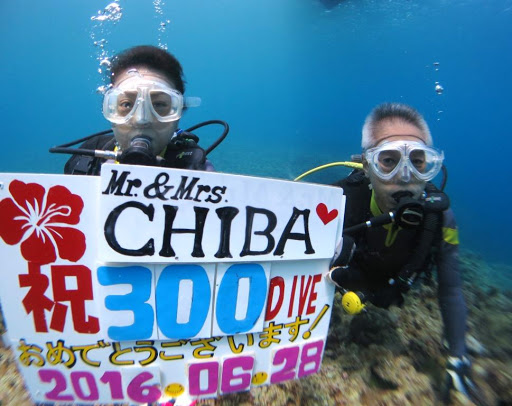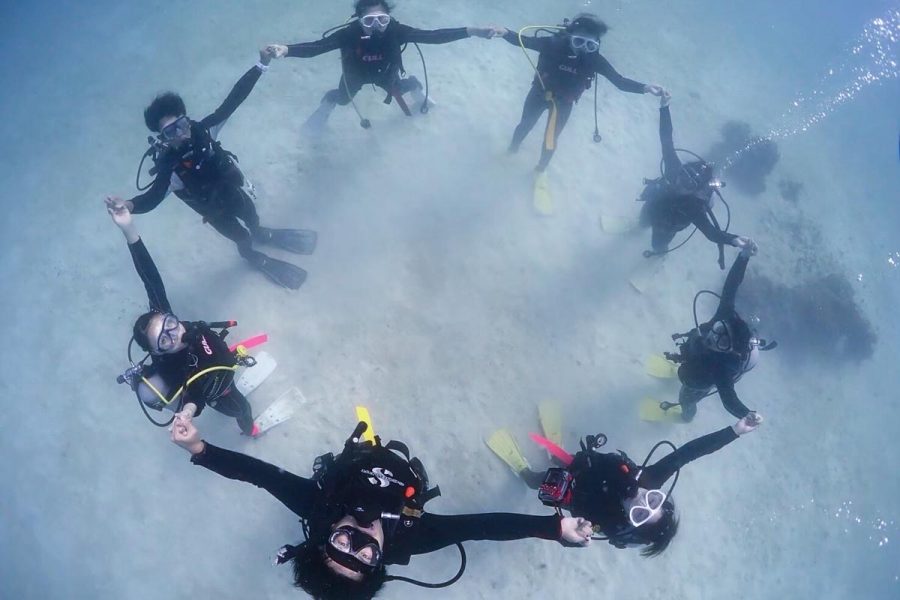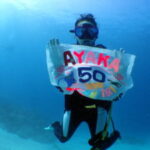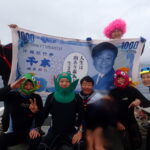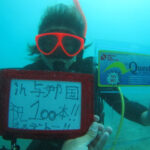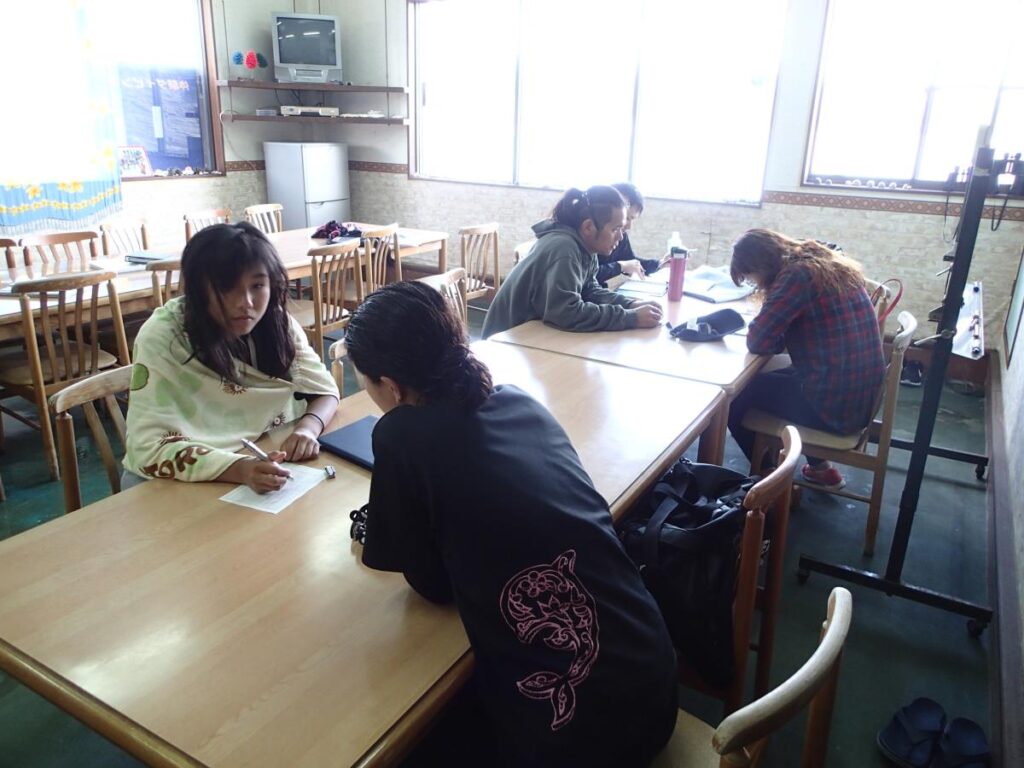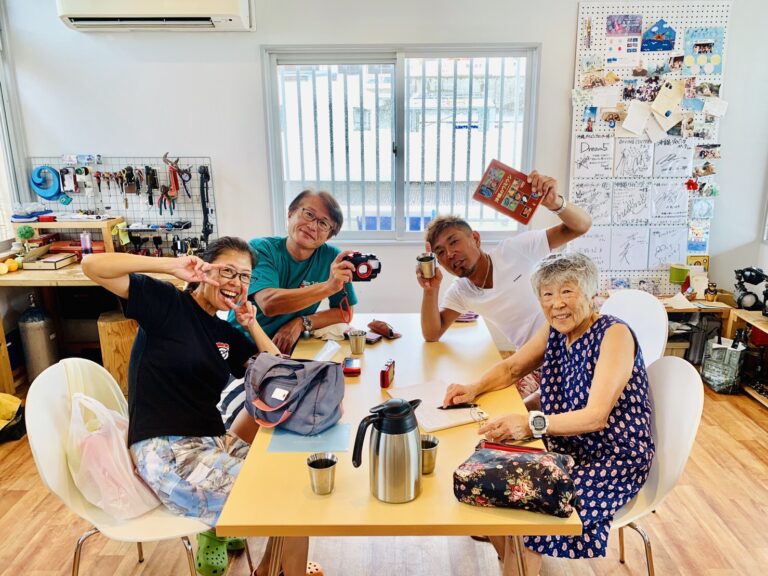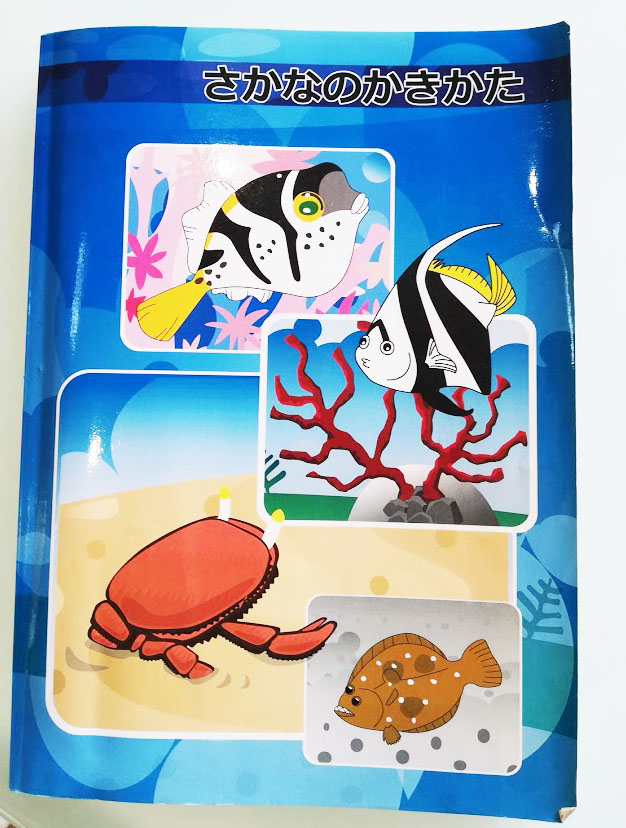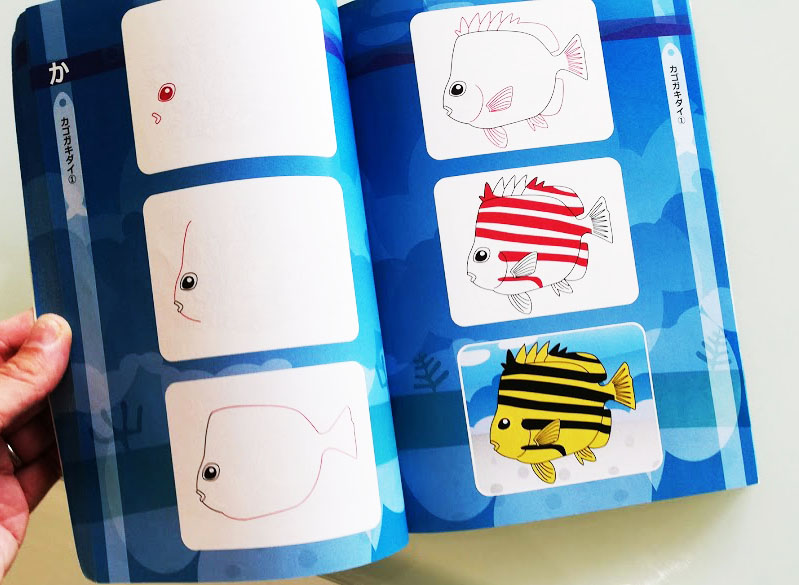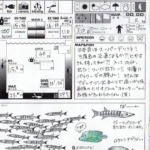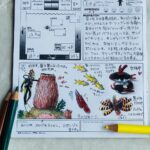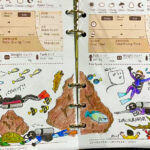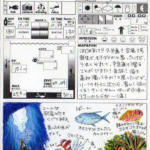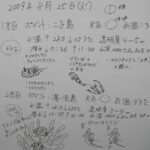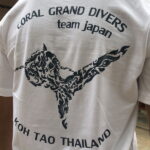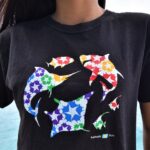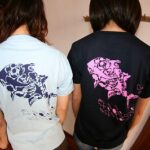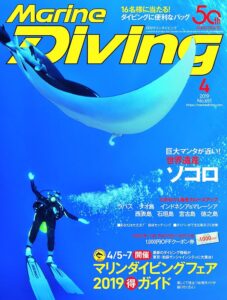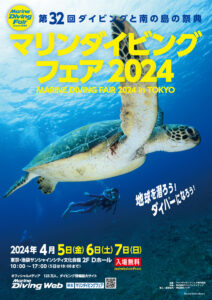Culture
The Social Side Of Japanese Diving
Underwater flags and commemorative pictures
Image source: www.blueleaf.jp
Japanese guides mostly big slates to communicate underwater, which is one of the trademarks of “Japanese-style” diving, but another national obsession is the underwater commemoration picture, or “ki-nen shashin” in Japanese.
Sure, many divers love taking some kind of picture with their buddies at the safety stop, or even UW selfies, but Japanese divers and dive operators often take it to another level.
Image source: https://bigholiday-miyakojima.com/21898
Seasonal highlights like underwater Christmas trees are not unheard of, and special underwater flags to commemorate happy group events, trips, and more importantly, threshold number of dives are relatively common.
To the point that most dive shops or dive clubs will have kind of flag, for the guide or divers to take underwater, and deploy at some point during the dive.
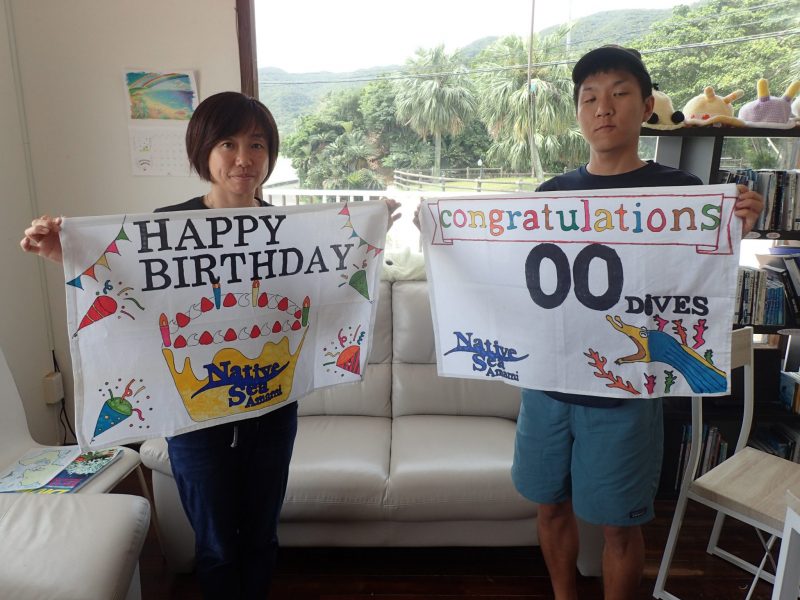
If no flag is available, the big magnetic slates can certainly come quite handy!
Most of these underwater flags are made of fabric, and have an open section where the appropriate numbers / names can be velcroed on for the special occasion, to commemorate Mrs Morita’s 250th dive for instance.
Underwater commemorative pictures are far from being an exclusively Japanese practice, they’re quite common in European dive clubs for instance, but what sets Japanese practices apart are the captions, and dedicated underwater flags, often provided by the dive operator.
Most divers seem to appreciate this kind attention – especially since many dive regularly with the same people or operators, as part of diving clubs or within similar structures.
Beyond the flags, divers also like to take group poses for underwater commemorations, and, as on land, some of these can be quite elaborate!
This is also shared with other Asian countries, and mirrors topside camera use for group pictures.
And here are a few dive flag examples found via Google’s photo search:
Comprehensive logbook sessions and logbook art
Logbooks and other dive diaries, and somewhat formal logbooking sessions are an important aspect of Japanese diving culture, and of Japanese-style guiding.
After diving, most dive centres in Japan will provide a time dedicated to working on logbooks or photo IDs (called logu-zuke ログづけ in Japanese) with one’s dive guide, which can range from quite formal to informal.
Image source: marinejp.com/
This is also where Japanese dive guides’ extensive knowledge of local marine life shines, not just in the standard ID’ing of species but also giving details on their growth, life cycles, environment and general ecology.
This type of logging also exalts certain specific interests of Japanese divers, which strengthened through sharing and discussion.
In some cases, however, logbooking might be limited to handing out a sheet with dive data and the names of marine life encountered, but this usually for practical reasons such a lack of time or comfort (Japanese dive centres do not employ as much staff as South-East Asian operations, meaning dive-staff is also often quite busy with multiple operational tasks) or language issues if non-Japanese-speaking divers are present, but in most cases, if time permits, a proper logbook session is usually in order.
Image source: www.okinawadc.com
Oceana.co.jp has very an interesting post on Japanese-style logbooking, explaining very well that the way logbook sessions are often organised in Japan highlights the passive dependency (依存心) divers tend to have towards their guide/instructor, and how this was expected as a service provided by the operator.
Yukari-san’s article also describes this approach to logging as somewhat exclusive to Japanese diving (日本特有), which is not exactly true as, shops offering a post-dive log-book time are actually quite common in other destinations.
In Komodo National Park, many Labuan Bajo dive centres organise a post dive time when guest sit-down with the guide and fish-ID books.
The instructor/guide goes over the dive (giving dive parameters to divers who – gasp – were diving without a computer…), and of course main fish spotted, usually over a few beers or snacks.
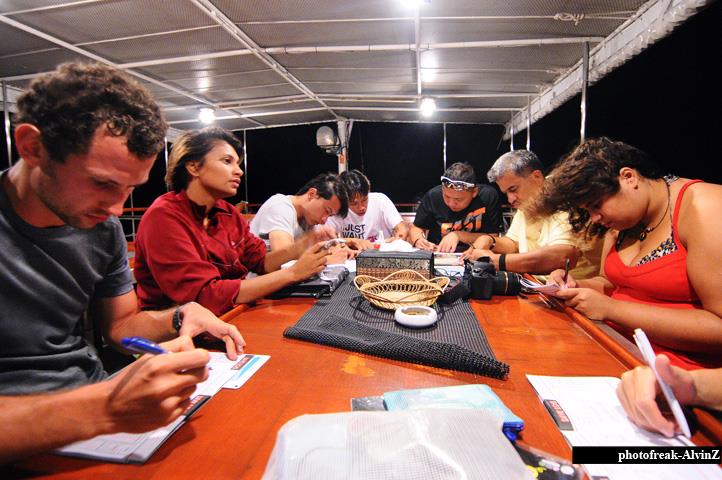
It’s very similar, though often much less specialised than what is found in Japan, since experienced divers tend to do their own logging (and spotting!), usually in their own time (and of course grab the dive parameters fron their own computer).
They’ll mostly rely on guides for site names and the obscure species.
It’s true that outside Japan, log-book session are more common in places catering to less experienced divers.
But not always.
It’s quite common on liveaboards as well, and some resorts (Wakatobi Dive Resort) will often have a live-in marine biologist, helping out with fish-id, and giving little conferences on the local environment to guests, for instance.
And let’s not forget famous macro destinations such as Lembeh, where logbooking/fish/photo ID’íng with local staff is usually part of the deal!
Most Japanese divers (though some diver will choose to skip it) appreciate this slightly formalised time for sharing with the other divers of the group and the guide, and in certain circumstances (liveaboard cruises, for instance) it can merge into happy hour, with drinks and snacks.
On a liveaboard we worked on friend of ours is well-known for her intensive (and very lively) logbook/drinking sessions, which could last over two hours over whiskies and snacks, as she walked divers back through the day’s 4 dives and all they encountered…
Many Japanese divers are also very creative with their logbooks.
Japan has a strong diary-keeping culture, dating back to some of the first works of Japanese literature, and this somehow transpires into the diving world.
We’ve seen some incredible logbooks, either for the detail they contained, or the artistic creativity that went into them, ranging from cute cartoons to high-end naturalistic fish art, and some were true works of art.
This Oceana.co.jp post has fantastic examples of such high level logging.
And here are a few more examples of artistic Japanese blogging found via Google’s photo search:
Dive shop blogs
Similarly, most Japanese dive centres have some sort of dive blog, usually updated daily, either on the operator’s web page or on social media.
This is important in Japanese dive culture, as most Japanese divers like to follow the action and conditions of places they will visit.
Beyond marine life encountered and main events, most daily blog entries indicate visibility and water temperature and other dive profile data.
It is very common for dive staff to update the blog themselves after the dives (this is in fact usually one of their duties), and for them to borrow guests’ pictures, showcasing their best shots.
As an example, here is a link Mikomoto Hammer’s to the daily shop blog.
Uchi-age
At the end of a diving session, especially multiple-day ones, Japanese dive centres might offer customers the chance to socialise later in the day or in the evening, over drinks and/dinner.
While quite common, this custom, called uchi-age (打ち上げ)in Japanese (a sort of “closing celebration”), is not offered by all dive centres, and also might not be offered to non-Japanese-speaking guests, for language/cultural reasons.
If you are invited to a post-dive uchi-age type of event, they will often be short, as dive staff do have to get up quite early, so try to be on time, even if it is an informal invitation.
On a related note, the Ogasawara islands’ Chichi-jima has rather interesting tradition of having not only a farewell ceremony on the pier, but also a small boat-parade,
where the island’s diving and fishing boats escort guests leaving on the weekly ferry.
All dive centres wave out to their guests while following the ferry and, Japan being Japan, the boat escorting is organised in an age-based hierarchy…
Farewell boat parade, Chichi-jima, Ogasawara islands
Yet other than the slightly more formalised logbook sessions and uchi-age type events offered by operators, Japan’s after-dive culture is rather similar to what you would find elsewhere around the world, usually including good food and plenty of beverages – preferably ice-cold if the weather is hot – and lots of laughs sharing of topside and underwater stories and anecdotes.
T-shirts
Japanese divers often buy and wear the dive centre’s T-shirts, which is understandable as the models offered are, as a rule usually more stylish than what you’d find elsewhere, and lovely example of Japanese design, including elaborate calligraphy, cute shapes and colour or modern takes on traditional patterns, very cool – though some T-shirt design do feature weird decorative English (kazari-eigo, odd to nonsensical English, more on this here) and there are some pretty kitsch designs out there as well.
And here are a few more examples found via Google’s photo search:
"Repeaters"
Japanese divers do tend to return to places they like.
And return customers, known as repeaters in Japanese, often get some sort of extra service or special considerations from staff – return customers can build up an operator’s reputation.
This can go quite far, with some repeat customers (who sometimes call themselves as heavy-users) truly expecting such special treatment and customised attention, and also sort of behaving like they own the place, and making requests on dive sites, organisation and the like. So much for manners…
It usually goes well, as staff works to avoid tensions, often creating special diver groups for returning customers, to which the operation’s most experienced guides are allocated.
But on occasions, we’ve even seen repeater behaviour and treatment create slight tensions between guests, who might resent not receiving exactly the same service, which can put a lot of stress on the dive guide as well.
Diving Publications And websites
This is in no way specific to diving: Japan has, since pre-modern time, always had a powerful print industry.
To this days, daily to twice-daily national and local newspapers have dedicated readerships other countries could only dream of. Japan has a large general readership, and a massive book and magazine industry which has, to this day mostly resisted the onslaught of online media.
When it comes to diving, Marine Diving is, by far, the largest and most influential and oldest publication in Japan.
Its publication network includes a main monthly magazine publication, which is now over half a century old, special guidebooks and also a women-oriented dive publication, LaScuba, “a travel magazine for women in love with the ocean and the islands”…
Marine Diving also organises one of Japan’s biggest dive expos, the Marine Diving Fair.
Marine Diving is also plays an active role in cementing Japanese dive culture. The publication, for instance, issues yearly rankings and awards for the most popular diving areas, operators, both domestic and abroad, but also for slightly more suprising categories such as :
most popular dive guides in Japan
most popular Japanese dive guides working abroad
most popular diving instructors
which is probably not something found anywhere else…
Japan’s other major publication is the more recent (first edition dates back to 1980), and slightly more fashioned-focused Diver Magazine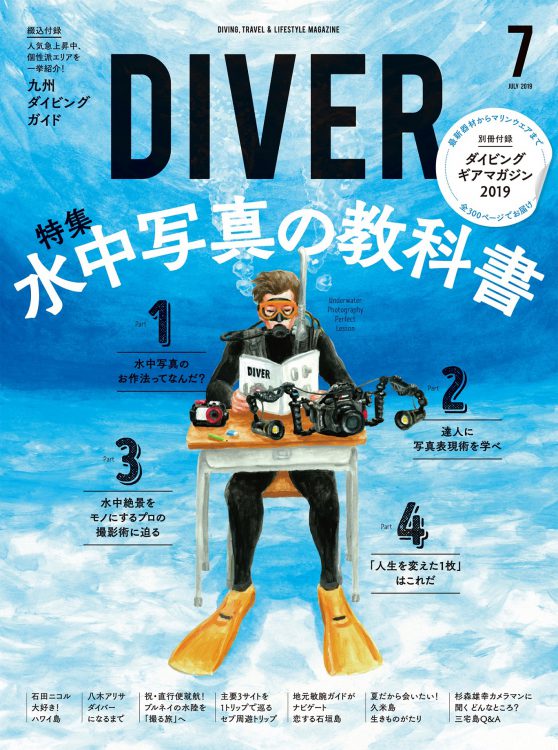
Other than Diver Online,
currently one of the most active Japanese-language blogging / info platform on diving related activities and the sea is Oceana.
![]()
Topics covered include diving of course, but also the “blue economy”, environment and many more.
When it comes to English-language information, we would strongly recommend the Japan National Tourism Association (JNTO)’s JAPAN DIVING website, a fantastic and official resource aimed at promoting diving in Japan, with a very extensive guide on diving in Japan
And also NPO Japan Diving Experience’s Dive In Japan’s website, one of the most extensive references on Japanese diving, and offering support to help non Japanese-speakers organise dive trips in Japan.
You can access links to English-language Japanese publications here.

